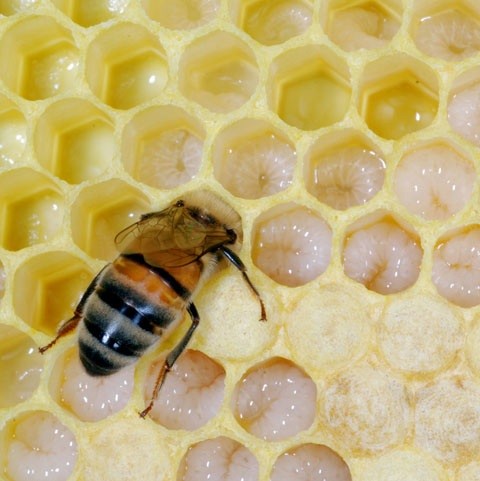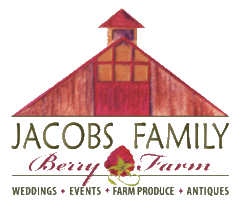Abandoned hives, public nuisances, 552.250
Agricultural products, standards, 587.290-587.450
Apiaries
Definition, 552.0851
Disease-infected apiaries, procedures, 552.160, 552.170
Inspection, 552.160, 552.190, 552.215
Standards of colony strength, 552.205
Colony defined, 552.0854
Commercial pollination, 552.205
Diseases
Concealment unlawful, 552.240
Definition, 552.0858
Diagnostic laboratories, establishment by State Department of Agriculture, 561.305
Exposure of bees unlawful, 552.240
Removal of diseased bees without permit unlawful, 552.280
Exemption from execution, 21.090
Honey
Agricultural products, standards, 587.290-587.450
Extraction regulated, 552.260
Organic products, certification of producers and handlers, 587.700-587.830
Robber bees, exposure constitutes public nuisance, 552.255
Use of word in product label, 585.355, 585.550
Importation, 552.212
Movable frame hives, requirement, 552.230
Neglected hives, public nuisances, 552.250
Plant Industry Program, funding and expenditures, 375.026, 561.355
Property tax exemption, 361.068
Public nuisances, 552.160, 552.170, 552.250, 552.255
Queen bees, importation, 552.212
State Department of Agriculture
Attorneys, employment, 552.300
Diseases, establishment of diagnostic laboratories, 561.305
Field agents and inspectors, powers and duties, 289.290, 552.180, 552.190
Orders for destruction or treatment, 552.160
Powers generally, 552.090
Violations
Civil penalties, 552.090
Criminal penalties, 552.310
Prosecution by district attorney, 552.300
Four pesticides commonly used on crops to kill insects and fungi also kill honey bee larvae within their hives, according to Penn State and University of Florida researchers. The team also found that N-methyl-2-pyrrolidone (NMP) -- an inert, or inactive, chemical commonly used as a pesticide additive -- is highly toxic to honeybee larvae.
"We found that four of the pesticides most commonly found in beehives kill bee larvae," said Jim Frazier, professor of entomology, Penn State. "We also found that the negative effects of these pesticides are sometimes greater when the pesticides occur in combinations within the hive. Since pesticide safety is judged almost entirely on adult honey bee sensitivity to individual pesticides and also does not consider mixtures of pesticides, the risk assessment process that the Environmental Protection Agency uses should be changed."
According to Frazier, the team's previous research demonstrated that forager bees bring back to the hive an average of six different pesticides on the pollen they collect. Nurse bees use this pollen to make beebread, which they then feed to honeybee larvae. To examine the effects of four common pesticides -- fluvalinate, coumaphos, chlorothalonil and chlorpyrifos -- on bee larvae, the researchers reared honeybee larvae in their laboratory. They then applied the pesticides alone and in all combinations to the beebread to determine whether these insecticides and fungicides act alone or in concert to create a toxic environment for honeybee growth and development. The researchers also investigated the effects of NMP on honey bee larvae by adding seven concentrations of the chemical to a pollen-derived, royal jelly diet. NMP is used to dissolve pesticides into formulations that then allow the active ingredients to spread and penetrate the plant or animal surfaces onto which they are applied. The team fed their treated diet, containing various types and concentrations of chemicals, to the laboratory-raised bee larvae.
The researchers also investigated the effects of NMP on honey bee larvae by adding seven concentrations of the chemical to a pollen-derived, royal jelly diet. NMP is used to dissolve pesticides into formulations that then allow the active ingredients to spread and penetrate the plant or animal surfaces onto which they are applied. The team fed their treated diet, containing various types and concentrations of chemicals, to the laboratory-raised bee larvae.
The team's results are reported in the current issue of PLoS ONE.
"We found that mixtures of pesticides can have greater consequences for larval toxicity than one would expect from individual pesticides," Frazier said.
Among the four pesticides, honey bee larvae were most sensitive to chlorothalonil. They also were negatively affected by a mixture of chlorothalonil with fluvalinate. In addition, the larvae were sensitive to the combination of chlorothalonil with the miticide coumaphos. In contrast, the addition of coumaphos significantly reduced the toxicity of the fluvalinate and chlorothalonil mixture.
According to Chris Mullin, professor of entomology, Penn State, these pesticides may directly poison honeybee larvae or they may indirectly kill them by disrupting the beneficial fungi that are essential for nurse bees to process pollen into beebread.
"Chronic exposure to pesticides during the early life stage of honey bees may contribute to their inadequate nutrition or direct poisoning with a resulting impact on the survival and development of the entire bee brood," he said. The researchers note that fluvalinate and coumaphos are commonly used by beekeepers on crops to control Varroa mites, and are found to persist within beehives for about five years. Chlorothalonil is a broad-spectrum agricultural fungicide that is often applied to crops in bloom when honey bees are present for pollination because it is currently deemed safe to bees. Chlorpyrifos is a widely used organophosphate in crop management.
"Our findings suggest that the common pesticides chlorothalonil, fluvalinate, coumaphos and chloropyrifos, individually or in mixtures, have statistically significant impacts on honeybee larval survivorship," Mullin said. "This is the first study to report serious toxic effects on developing honeybee larvae of dietary pesticides at concentrations that currently occur in hives." The team also found that increasing amounts of NMP corresponded to increased larval mortality, even at the lowest concentration tested.
"There is a growing body of research that has reported a wide range of adverse effects of inactive ingredients to human health, including enhancing pesticide toxicities across the nervous, cardiovascular, respiratory and hormone systems," Mullin said. "The bulk of synthetic organic chemicals used and released into U.S. environments are formulation ingredients like NMP, which are generally recognized as safe. They have no mandated limits on their use and their residues remain unmonitored.
"Multi-billion pounds of these inactive ingredients overwhelm the total chemical burden from the active pesticide, drug and personal-care ingredients with which they are formulated. Among these co-formulants are surfactants and solvents of known high toxicity to fish, amphibians, honey bees and other non-target organisms. While we have found that NMP contributes to honey bee larvae mortality, the overall role of these inactive ingredients in pollinator decline remains to be determined."
Visit our online store! Here you will find great tasting local honey, bee pollen, beeswax and candles for sale.
We also have a great selection of beekeeoping supplies. We carry a full line of protective clothing, beekeeping hats, veils,beekeeper suits, jackets and gloves. You will also find complete beehives, beekeeper starter kits and tools and accessories.
About NNBA
The Northern Nevada Beekeepers Association is a Not-For-Profit Corporation, whose purpose is "to promote the art and science of beekeeping among hobbyist beekeepers and the dissemination of the value of the honeybee to the general public."
Join us at a one of our monthly meetings to learn more about beekeeping in Northern Nevada. Members include hobbyists, commercial beekeepers and those just beginning to learn about these fancinating creatures.

Your favorite local HalleluYah Honey is now available for pickup at Jacobs Family Berry Farm in Gardnerville, Nevada.
Please be sure to drop by and pick up some honey, they also have wonderful berries and jam as well.

